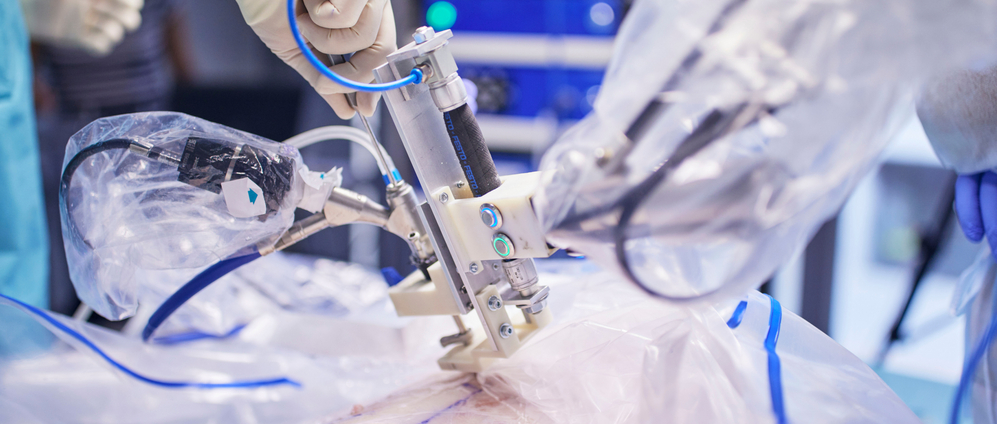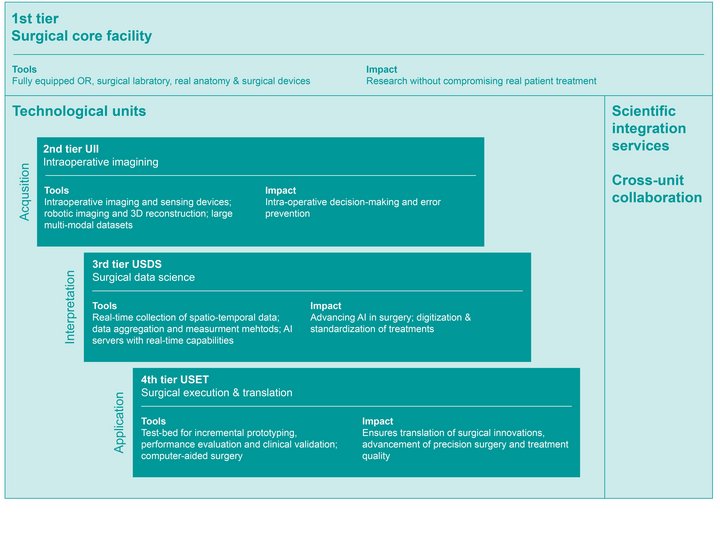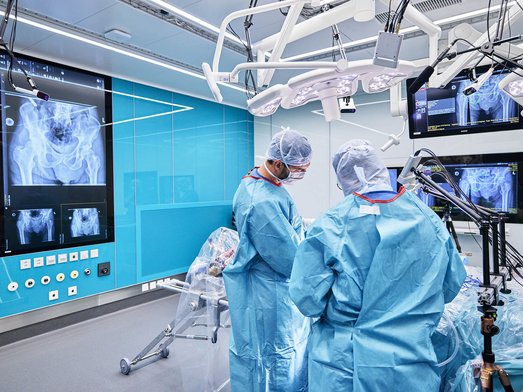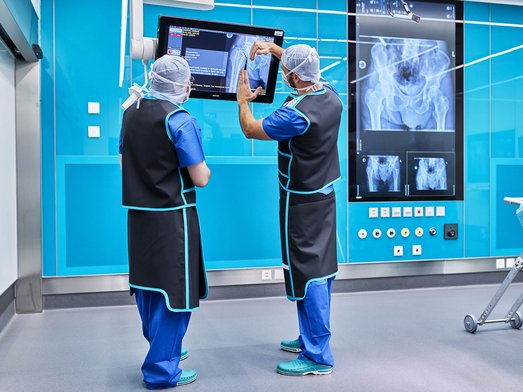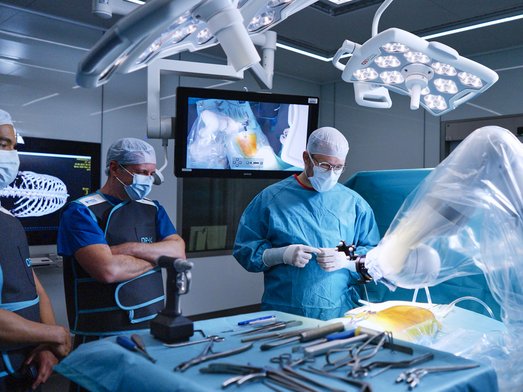1. Intraoperative Imaging
At the core of this unit lies the integration of advanced intraoperative imaging technologies with robotics such as robotic ultrasound and robotic computed tomography, complemented by innovative sensor systems including depth sensors, hyperspectral imaging and photogrammetry. This combination allows researchers to harness the full potential of intraoperative visualization and to develop new image-based methods that enhance surgical decision-making and error prevention.
2. Surgical Data Science
Building on a high-performance computing network and Nvidia DGX infrastructure, this domain enables real-time data acquisition, AI-driven analysis and machine learning applications tailored to surgical innovation. By translating complex surgical data into actionable insights, it paves the way for evidence-based advancements in surgical practice.
3. Surgical Execution and Translation
Focusing on the practical application of new technologies, this area utilizes computer-assisted surgery systems, augmented reality, haptic feedback devices and surgical robotics as a versatile testbed for prototyping, verification and validation. These capabilities accelerate the translation of surgical innovations from concept to clinical use.
Scientific Integration Services
To ensure seamless research execution, our Scientific Integration Services provide expert support for the implementation of user-specific technologies, methods, and prototypes within and across all three research units.
